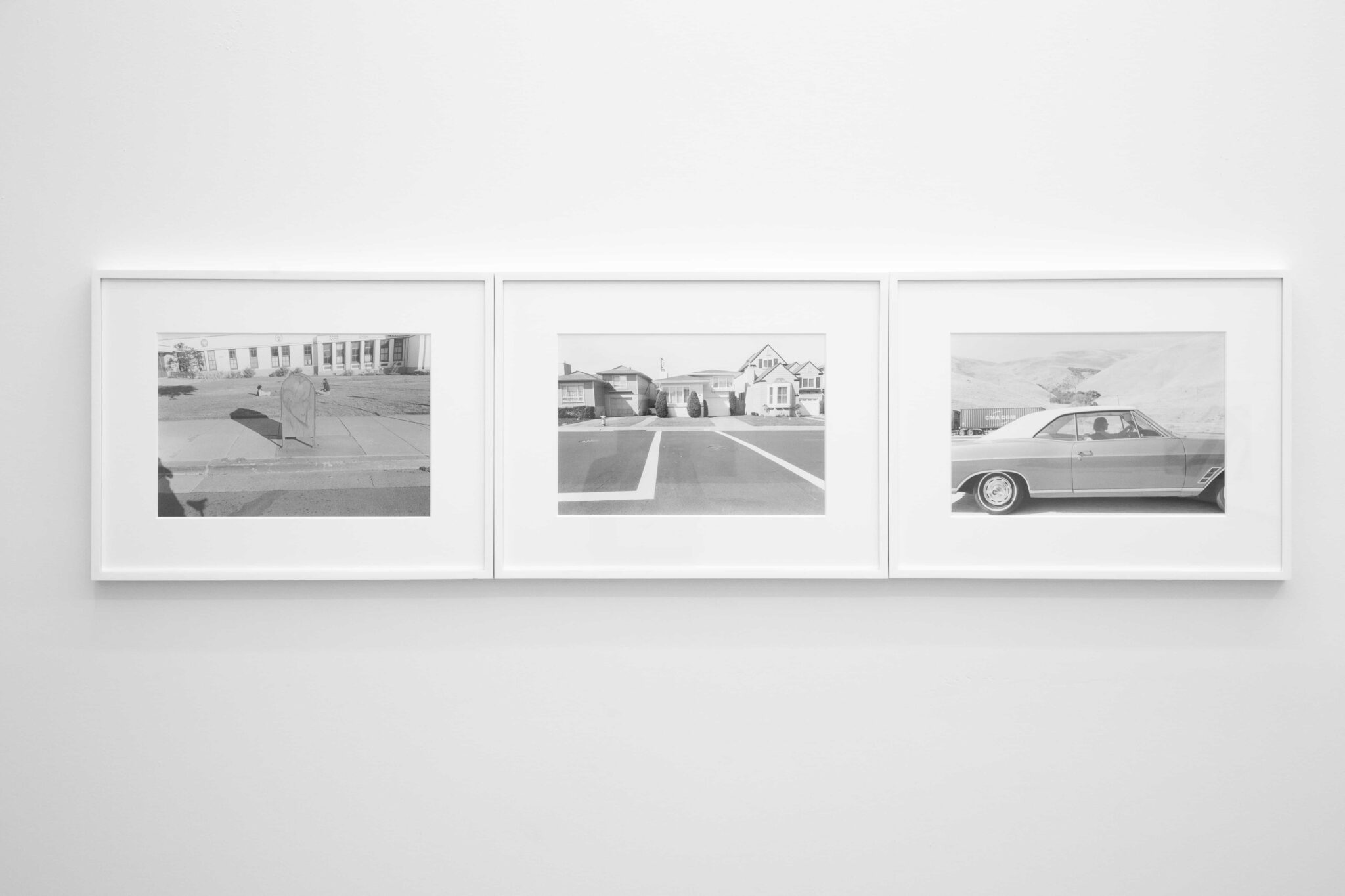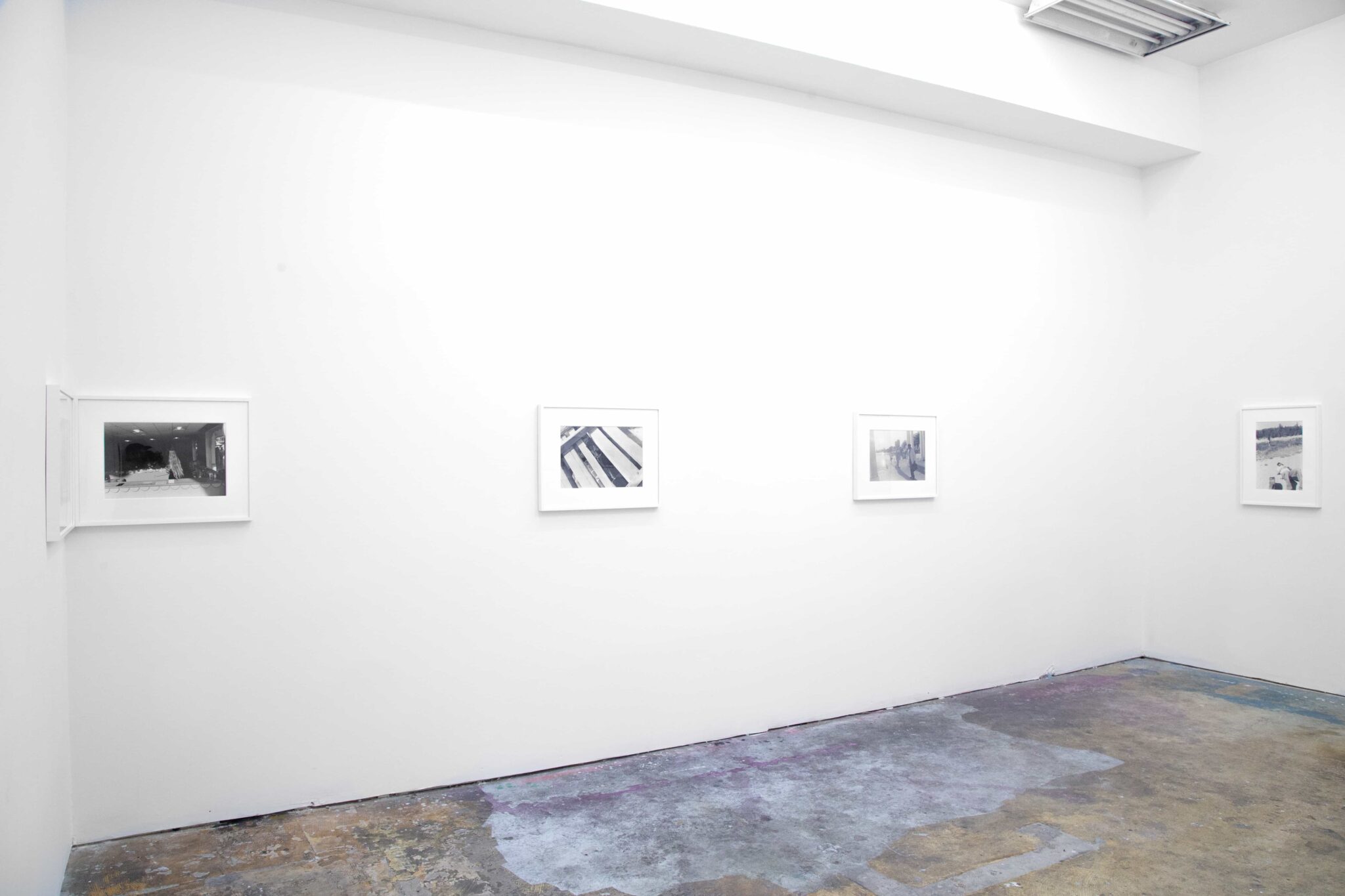Climate Control
22 March 2024
In A Wonderful Offer, Austin Leong’s first solo exhibition in San Francisco, a three-part narrative unfolds, blending disparate temporal layers: familial footage from the late 50s, the sonic landscape of the 60s via a single album by the San Francisco Psych Rock band Fifty Foot Hose, and Leong’s monochromatic photographic storytelling. The projection of the family footage breathes life into the everyday, capturing Austin’s Chinese American lineage navigating and seemingly thriving in American life—new automobiles, dancing, poolside leisure, dining out, and Disneyland visits. ‘Cauldron,’ the “soundtrack” of the exhibit looks toward another San Francisco, reverberating as an echo, a portrait from a time of alternative cultural movements that made the city famous, again, around the world. Leong’s photographic work chronicles contemporary Californian existence, framing the mundane and profound—walks outside, driving, running in the forest, punctuated by architectural embodiments of suburbia. In the photos, it is a world of perpetual sunshine, a dream of endless luminosity. Leong’s 35 mm prints draw comparisons to Henry Wessel’s work from the 60s-70s, showcasing a formal and technical skill that is captivating. Yet, this vintage feel in 2024 renders Leong’s photos strange through their anachronism.
This blend of elements in Leong’s exhibition challenges the linearity of time and the notion of American progress as a constant forward march. Observers transition from the vibrant colors of 50s California—families playing, dancing, dining together—to the psychedelic echoes of the 60s through the album ‘Cauldron,’ and finally to the black and white photos that, though captured between 2017 and 2024, seem ensnared in the aesthetic of the 70s. Within Leong’s images, a noticeable shift occurs—the vibrant, energetic tone of the first gallery gives way to reflective solitude. Here, Leong’s photos depict an American existence marked by alienation and stillness, a contemplation on Western isolation and seclusion. It’s as though the American dream of the 60’s and 70s has been paused, then placed on an infinite loop.
Austin Leong is a photographer and artist based in the San Francisco Bay Area. His work looks at borders and liminal spaces and asks us to question the mundane and quotidian. Never looking to exclude, his photos mix and compress worlds. They find cracks in life and offer us magic.
Leong’s work has been featured in The Atlantic, The New York Times, Open Space (SFMOMA), and the San Francisco Examiner. He has been included in numerous exhibitions throughout the Bay Area, including With Soft Eyes alongside Adrian Martinez and Henry Wessel at the Center for Photographic Art, and Looking Forward: Ten Years of Pier 24 Photography. He also co-directs Book and Job Gallery, a photographer-run studio, darkroom, and gallery space in San Francisco’s Tenderloin neighborhood.
_
Austin is here, ground, from the sea, rooted. He slips by you with a flicker. His white Subaru. Black and white
photography. I told him he should call his show bleach, or peroxide or International Orange. He said he’d think
about it. I asked him if he would try something new. He said he would think about it.
A Wonderful Offer is love and color.
Do you feel safe here? Warm.
Do you like to dance? Tone.
Austin Leong’s solo exhibition here at Being in life without wanting the world is not a photography exhibition. It is a
dance recital. Our recital. Hold someone, move with them, make lines through the space. Kiss yourself.
San Francisco.









Austin Leong’s exhibition A Wonderful Offer, outlines a person wandering across California’s landscape, observing its time score, its timber, its towns, its compositional parts. In the images air, unseeable, is the heaviest object on view, and time, extended, is defined by nothing out of the ordinary. Where offerings and observations collide I wonder what is being gifted and who might be doing the receiving.
I once spent a lot of time thinking about negative spaces. Through an artist’s Science Fiction of that name, I wanted to point to a negative space as a place where joy and creativity and love and longing and mistakes find refuge away from buttoned-up modernism, businessmen, and the slick administration of the world. In art history negative space is anything but the foreground, it’s just the supporting, subordinate compositional elements of a work. Cuban-American scholar Jose Esteban Muñoz wrote a whole brilliant, lamenting combination of essays, Cruising Utopia, on this idea; longing proposes the shape of difference, difference is the negative space around what is now, if the longing is never achievable (as for the suggested queer subject to Muñoz) than the negative space is a kind of possibility, not the utopia of Sir Thomas More but an unending utopian state possible in fictions, ridden with loss, insistent on its own being, negotiating its own conditions for life.
Leong’s photography is like peripheral vision, sharp when capturing our surroundings and tender towards negative spaces. It outlines a central something that feels like longing but also reminds me of being young in the suburbs of the South Bay, missing a class to realize the structures of my life are fragile, they break and spill over onto sun-baked pavement, finely mowed lawns, the day-to-day rarely seen murmuring alongside my usual absence. Afternoon shadows trace landscapes absently trodden, driven through, gazed past, and curtained away from view. Although an endless amount of worlds tangential to ours exist and end and begin again all of the time, attending to the one we see as a vessel to hold all of our curiosity might both render our present new to us and reconfigure our sense of self within it.
A film compiled from home video recordings of Leong’s family during the 1950s greets and directs viewers to the back of our three rooms. In it, relatives of his go to an amusement park, leave their houses, have picnics, go to school celebrations. It’s soft, it’s kind, it is removed and equally at the center of Leong’s works; a grouping of family history imprinted on a place that may show little notable or traceable evidence of them. But in the periphery, something they left to the place is there– the world as it is, with them having been in it– a gift to Austin, a gift from California.
